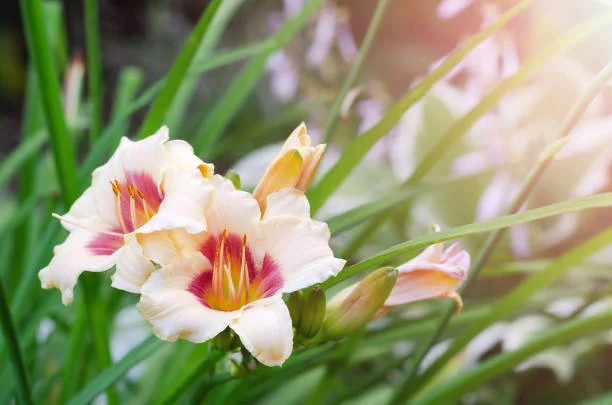If you’ve ever admired the soft, elegant look of white and cream daylilies or Pale-Blooming Daylilies, you know how much they can brighten a garden. But keeping these pale blooms looking their best takes a bit of care. Unlike bright-colored flowers that can hide a bit of wear and tear, white and cream flowers show dirt, browning, and fading more easily. Here’s a straightforward guide to keeping your pale daylilies healthy and vibrant.
Choosing the Right Spot
Location is key. White and cream daylilies or Pale-Blooming Daylilies do best in full sun, but they can tolerate some light shade. Too much shade may reduce flowering and make the plants look leggy. When planting, pick a spot with well-draining soil to prevent root rot. If your garden tends to stay wet after rain, consider raised beds or adding some compost and sand to improve drainage.
Go deeper — this related post builds on ideas and reveals hidden connections.
Planting and Spacing
Space your daylilies or Pale-Blooming Daylilies properly. Crowded plants can lead to poor airflow, which increases the chance of disease. Give each plant at least 18 to 24 inches between crowns. This spacing helps them grow strong and allows their leaves and flowers to display without overlapping too much.
For planting, dig a hole about 12 inches wide and deep enough to cover the roots but keep the crown (where the leaves meet the roots) just above the soil. Water well after planting to help them settle in.
Watering and Feeding
Pale daylilies need consistent moisture, especially during the flowering season. Water them at the base, avoiding the leaves and flowers to prevent spotting or rot. A general rule is about 1 inch of water per week, either from rainfall or supplemental watering.
Fertilize your plants in early spring and again after the first bloom. A balanced, slow-release fertilizer works well, but avoid overfeeding, as too much nitrogen can encourage leaf growth at the expense of flowers. You can also use a bit of compost around the base for added nutrients.
Deadheading and Pruning
Deadheading, or removing spent flowers, keeps your daylilies or Pale-Blooming Daylilies looking neat and encourages more blooms. Snip the faded flowers back to the base of the stem. Once the flowering season is over, you can cut back the leaves lightly to tidy up the plant, but don’t remove all foliage — it helps the plant store energy for next year.
Pest and Disease Control
Daylilies or Pale-Blooming Daylilies are generally hardy, but pale blooms can show damage more quickly. Keep an eye out for aphids, spider mites, and thrips, which can affect leaves and flowers. Wash off pests with a strong stream of water or use insecticidal soap if needed.
Fungal diseases like leaf streak or rust can appear in damp conditions. Avoid overhead watering and ensure proper spacing for airflow. If you notice brown streaks on leaves, remove affected foliage promptly.
Mulching
A layer of mulch around your daylilies helps retain moisture, suppress weeds, and keep the soil temperature even. Organic mulches like bark, compost, or straw are ideal. Keep the mulch a few inches away from the crown to prevent rot.
Seasonal Care
In late fall, cut back dead foliage to prevent pests and diseases from overwintering. In colder climates, a light mulch layer can protect roots from frost. In spring, remove any winter mulch and check for new shoots.
Limitations and Considerations
White and cream daylilies are beautiful, but they do have some limitations. Their pale blooms are more prone to sunburn in extremely hot climates, and they may show dirt or damage faster than darker varieties. Flowering is also shorter than some other daylily types, so plan your garden with multiple bloom times if you want constant color.
If you’re looking for reliable varieties, Swallowtail Daylilies offers a White and Creams Collection with plants suited for UK gardens. Their selection includes hardy cultivars that can handle variable conditions.
Extra Tips from the Experts
A study on perennial plant care suggests that regular monitoring and early intervention make a big difference in plant longevity and bloom quality. By keeping an eye on pests, watering consistently, and pruning carefully, your daylilies will thrive year after year.
Conclusion
Caring for pale daylilies isn’t complicated, but they do need a bit more attention than darker blooms. By choosing the right location, watering consistently, fertilizing moderately, and keeping an eye on pests, you can enjoy their soft, elegant flowers throughout the season. White and cream daylilies can add a calm, sophisticated touch to your garden, and with a little care, they’ll stay bright and healthy for years.
Keep the momentum — explore more articles packed with insights and ideas.







